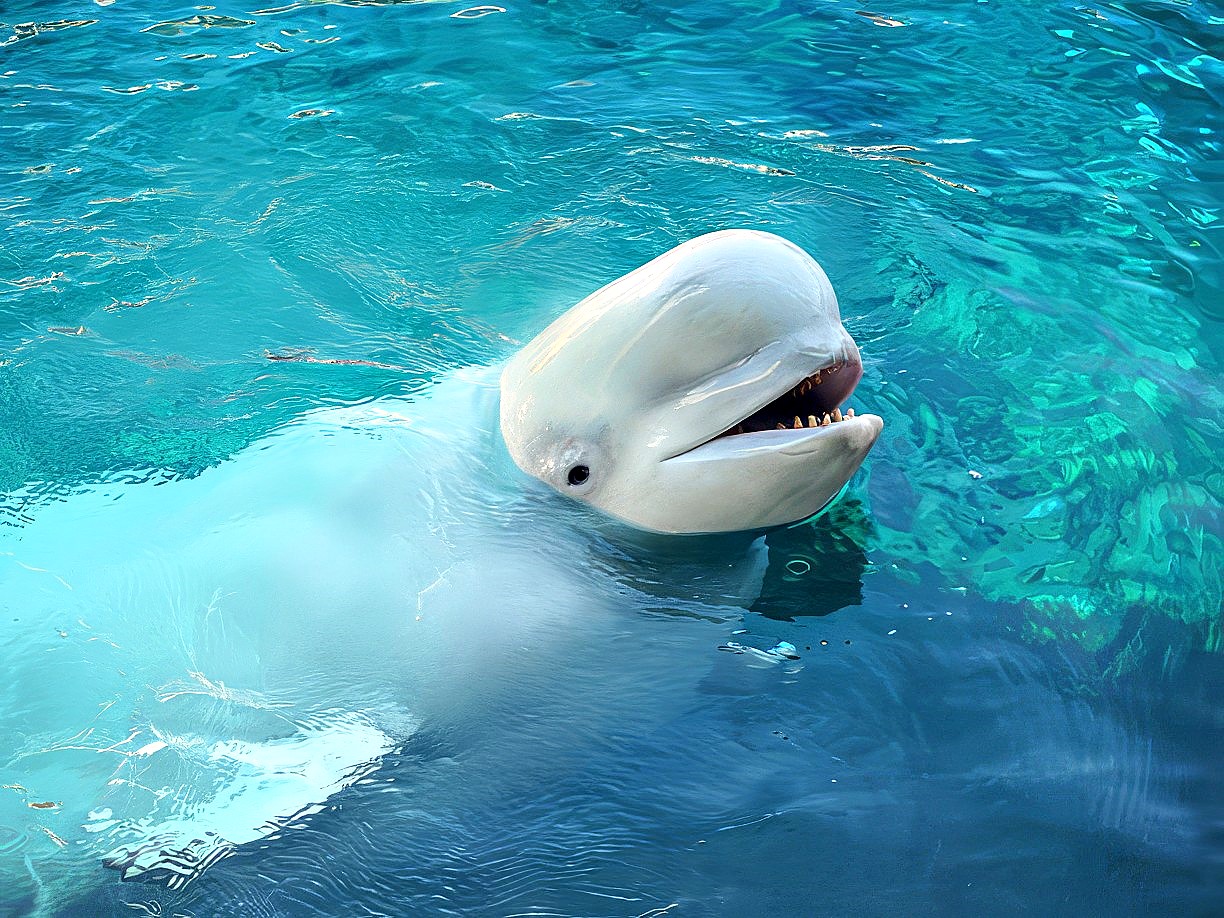Chapter 1: The Lifesaver 🏊♂️💥
In the chilly depths of Harbin’s Polar Aquarium, a thrilling free-diving competition unfolded on July 28th, 2009. 👏 Contestants vied to hold their breath underwater for the longest time, with the winner securing a coveted trainer position. 🥇 Little did 26-year-old Yang Yun know that his attempt would turn into a life-or-death struggle. 😨
As Yang ascended, the icy waters caused his legs to cramp, leaving him unable to surface. 🦵 Just when all seemed lost, a massive white figure appeared – Mila, the resident beluga whale. 🐳 With her powerful jaws, Mila grasped Yang’s leg and propelled him to the surface, saving his life. 💪 This extraordinary act of heroism soon made headlines worldwide, thrusting the gentle giants into the global spotlight. 📰
Chapter 2: The Enigmatic Belugas 🧐
Belugas, affectionately known as the “sea canaries,” belong to a truly unique family. 🐥 Their bulbous foreheads, often likened to the Antarctic explorers’ parkas, harbor a soft, oil-filled membrane that focuses sound waves for echolocation and communication. 🔊 Unlike most cetaceans with fused neck vertebrae, belugas can swivel their heads, lending them an inquisitive, almost human-like demeanor. 🤔
But what truly sets belugas apart is their incredible ability to mimic human speech and other animal sounds. 🐬🗣️ In 1984, Dr. Sam Ridgway, the “Father of Marine Mammal Medicine,” encountered a bewildering incident. 🧑⚕️ A diver working in a beluga tank suddenly surfaced, claiming someone had yelled “out” at him. 😯 The culprit? Noc, a 9-year-old beluga, who had consciously altered his vocalization to mimic human speech. 🐳🗣️ Noc’s remarkable feat demonstrated belugas’ desire to communicate with humans, a trait shared by others of his kind. 🤝
Chapter 3: The Mischievous Prankster 😜
In 2019, a peculiar guest arrived in the Norwegian town of Hammerfest – a beluga wearing a harness with a camera mount, sparking speculation of Russian espionage. 🇷🇺 Dubbed “Hvaldimir” (a portmanteau of “hval,” meaning “whale” in Norwegian, and Vladimir), this charismatic cetacean quickly became a local celebrity, charming residents with his playful antics. 🌟
Hvaldimir’s escapades soon went viral, capturing hearts worldwide. 💻 From retrieving a dropped phone 📱 to tormenting a seagull with a fish, 🐟 and even knocking a camera out of a kayaker’s hands only to retrieve it moments later, Hvaldimir’s mischievous spirit knew no bounds. 😂 His insatiable curiosity and intelligence were on full display, as he fearlessly interacted with humans, seemingly reveling in their attention and laughter. 😁
Beyond his antics, Hvaldimir’s arrival raised intriguing questions about his origins and training. 🤔 While some speculated he was a trained Russian spy, others believed he may have been part of a scientific research program. Regardless of his background, Hvaldimir’s playful nature and eagerness to engage with humans further cemented belugas’ status as the “sea canaries” – intelligent, social, and endlessly fascinating creatures. 🐥
Chapter 4: The Language Learners 🧠
Belugas’ remarkable ability to mimic sounds extends far beyond human speech. 🗣️ They have been observed imitating dolphin echolocation clicks, 🐬 walrus grunts, 🦭 and even the calls of other whale species with astounding accuracy. 🐳 This linguistic prowess is unparalleled in the marine realm, earning them the moniker “parrots of the sea.” 🦜
In 2020, a 4-year-old beluga at the Crimean Dolphinarium astonished researchers by mimicking dolphin vocalizations just two months after being introduced to its new companions. 🐬 Such rapid language acquisition highlights belugas’ remarkable capacity for learning and adaptation, a trait that has allowed them to thrive in diverse environments. 🧠
But belugas’ linguistic talents extend beyond mere mimicry. 🎤 Researchers have documented their ability to convey specific meanings through distinct vocalizations, akin to a rudimentary language. For instance, some calls are used exclusively for socializing, while others signal distress or serve as alarm calls. This sophisticated communication system underscores the depth of belugas’ intelligence and social complexity. 🧠💬
Chapter 5: The Human Connection 🤝
What truly sets belugas apart is their innate desire to interact with humans. 👥 Unlike most aquarium residents passively observed, belugas actively seek engagement, often startling visitors with unexpected antics. 😮 This proclivity for human connection has facilitated their successful captivity, allowing us to study these intelligent creatures up close. 🔍
From Noc’s pioneering efforts to Hvaldimir’s viral fame, belugas have captured our imaginations and hearts. 💓 Their playful spirits, linguistic talents, and eagerness to engage remind us of the profound intelligence residing beneath the waves. 🌊 Moreover, their ability to form strong bonds with their trainers and caretakers suggests an emotional depth rarely associated with marine life. 🤗
As we continue to explore the oceans’ depths, who knows what other extraordinary abilities these “sea canaries” may unveil? 🐳🎶 Perhaps they will one day bridge the communication gap between humans and the marine world, serving as ambassadors of the deep. Or maybe their mimicry skills will aid in our understanding of language acquisition and cognitive development. 🧠
One thing is certain: belugas have already secured a special place in our hearts and minds, reminding us of the wonders that still await discovery beneath the waves. 💙🌊
Copyright © 2025 Hea1th.net

